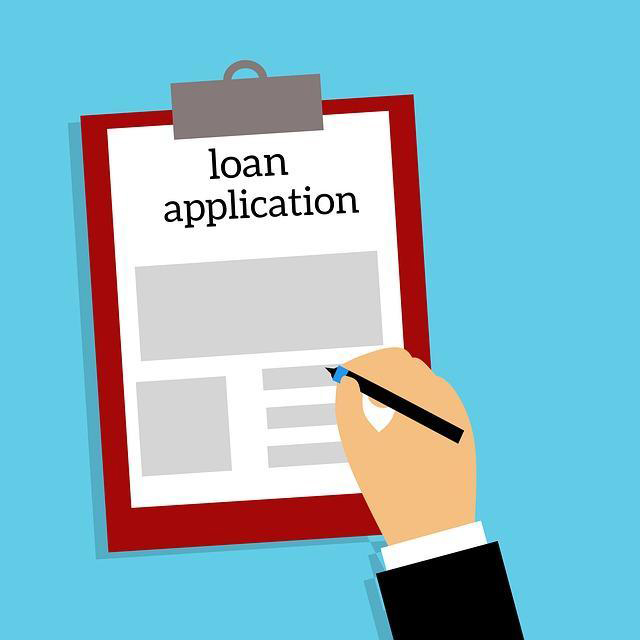(Translation for forbrukslan: consumer loan)
Loans are products offered by various financial institutions, including traditional banking entities, credit unions, and online platforms. The online arena is fast becoming favored, given that providers are often more generous with borrowers carrying less than favorable credit profiles.
These agencies also tend to process loans and disburse funds rapidly, sometimes within 24 hours. With an excellent credit profile and score, a borrower is more likely to get a consumer loan med lav rente (with low interest).

Once approved, the funds are directly issued to the client in one lump sum, with the repayments due each month on a fixed rate with a set interest amount until the agreed-upon term, when the debt will be expected to be paid in full. Let’s look more in-depth at consumer or personal loan fundamentals.
What Are The Fundamentals Of A Consumer Loan

A consumer or personal loan is an unsecured product provided by the bank with no collateral required by the borrower. You will not need to secure the funds with a house, vehicle, or savings.
That would put the risk in large part to the lending agency if the loan were to go into default. For this reason, the loans usually come with a higher interest rate depending on specific criteria set by the loan provider.
Loans can range from a minimum balance of roughly $1000 to as significant as $50,000, with an interest percentage falling in the single digits or climbing to as much as 36 percent. The terms vary from a year to roughly seven years for loan repayment.
How Do Personal Loans Function
When you decide to apply for a personal loan, it’s important to shop until you determine the one lender you want to work with to avoid too many hard credit pulls.
While this will only affect the credit score temporarily, it will stay on the history for two years. If you have too many hard checks within a short timeframe, this will look poorly with other attempts to pursue anything that requires a look at your credit.
When you complete the loan application, approval can be as quick as a few hours, depending on if you have all the necessary documents and a complete application.
The funds will then be disbursed into your account to use as you intend. In some cases, if the money is to be sent to creditors to pay off high-interest debt, the loan provider will offer to send the funds to the creditors or let you handle issuing the checks.
As you make each repayment, the provider will report to the credit bureaus positive or negative activity. It’s to your benefit to pay promptly and consistently to establish a good credit history.
-
The interest rate
A personal loan comes with a fixed APR (annual percentage rate) in addition to the principal amount. The interest is essentially a charge the lender requires for lending funds to a borrower. It will vary based on the credit profile and financial circumstances, including income and other variables set by the lender.
-
The monthly repayment installment
The repayment amount is a fixed monthly installment made for the duration of the loan’s life. The lender calculates this charge by adding the principal to the interest charges.
The term is a significant determinant in setting the rate. If you extend to a longer loan life, the monthly repayment will be less, but the overall cost of the loan by the end of its life will be greater due to more interest accruing.
You can also opt for a shorter term with more significant monthly repayments and save considerable money on the life of the loan. It’s a matter of having the most comfortable fit for your established monthly budget. Consumers can generally choose their timeframe, ranging from ” one to seven years.”
-
The origination fee
An origination fee is charged initially with personal loans aside from the principal and interest. All lenders don’t set these fees. Plus, they vary from one lender to the next, with some as high as six percent of the loan amount.
These funds are taken from the lump sum before being disbursed into your account, reducing the amount you will receive with your loan.
How Do Lenders Determine The Interest Rates?
The APR or Annual Percentage Rate for a personal loan determines the amount of interest paid over the loan’s life. Usually, the rate is fixed, meaning the APR will remain constant for the entire term, but you can also opt for a variable rate that will fluctuate.
An APR is not the same as an interest rate. It includes the interest rate, fees, and any other potential costs added in by the lender. A loan provider will often assess the variable rate on an established index rate like the “prime rate.”
This is the rate that banks and other institutions use to lend to each other. Lending agencies also have the capacity to cap the variable rate to avoid the possibility of it rising above a specific level despite the index rate progressing. The indication is most personal loans will be fixed, allowing a predictable monthly repayment.
The credit score is a primary determinant of the APR. For those with a good score, the loan provider will often qualify you with one of the lower rates. These usually go to individuals showing a credit score “over 700.” Other factors that play a part in determining the APR:
-
The yearly income level
The aim for lenders is that borrowers repay the funds on time and consistently each month without delay or default. The criteria a loan provider uses when setting APR or even qualifying an applicant for a loan is based around the ability to make those repayments without fail.
One factor is to have a reliable, steady income resource to keep up with the debt. When you show a stable employment history with regular income, the lender will look more favorably on the APR.
-
The payment history
The credit profile will speak to the loan provider about whether you have made consistent payments on time with other credit products, including credit cards and loans. If you have a good history of paying debt promptly, you will meet the lender’s criteria for the lesser rates.
-
The debt-to-income ratio
The debt-to-income ratio is the debt going out of the household each month divided by the gross income coming into the home. The ratio is a significant component of your credit profile and a primary consideration when determining the APR with any loan product.
With too much debt and not enough income, the addition of another bill will create a hardship making it difficult for you to make the repayment. That puts the lender at a greater risk of letting them know you can’t genuinely afford the loan repayments. They will either reject the loan altogether or raise the APR.

What Are The Reasons To Take A Personal Loan
A consumer or personal loan has varied purposes. A consumer loan can be used to obtain a mortgage, auto loan, student loan, personal loan, and many different secured or unsecured products.
A personal loan is one that is often unsecured and generally with a fixed rate. People tend to get a personal loan for a wide range of purposes since usually a lender doesn’t require a reason, but there are instances where loan providers have restrictions.
It’s essential to do due diligence when researching to ensure the lending agency you work with allows for the use you have in mind. Some more common reasons include the following:
- Debt consolidation
- A major purchase (auto, RV)
- Unavoidable expenses (wedding, funeral)
- Emergencies
- Medical costs
Some lenders will strictly work with borrowers on personal loans for debt consolidation; others have no restrictions. It’s wise to shop, so you’re prepared.
Final Thought
A consumer or personal loan can be found with various financial entities. You’ll need to look into how each works to see which would benefit your specific circumstances most. A traditional banking institution will likely have the most stringent eligibility criteria for a personal loan, followed by a credit union.
The credit union will also often anticipate the applicant will be a member or become a member. A favored option is the online platform, usually capable of a rapid approval and disbursement of funds, plus they are more forgiving of less than favorable credit.
In any event, all lenders aim for repayment of their funds. That’s their primary objective. Those who meet that criteria usually see the approval and the best loan rates and terms.

